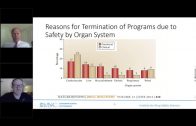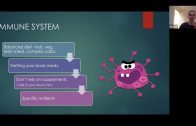DILIsym Simulations Support the Liver Safety of Ubrogepant in New Toxicological Sciences Publication
Dr. Paul B. Watkins and Dr. Jeff Woodhead discuss the DILIsym analysis of the latest publication in Toxicological Sciences!
Small-molecule calcitonin gene-related peptide (CGRP) receptor antagonists have demonstrated therapeutic potential for the treatment of migraine. However, previously investigated CGRP receptor antagonists, telcagepant, and MK-3207, were discontinued during clinical development because of concerns about drug-induced liver injury. A subsequent effort to identify novel CGRP receptor antagonists less likely to cause hepatotoxicity led to the development of ubrogepant.
The selection of ubrogepant, following a series of mechanistic studies conducted with MK-3207 and telcagepant, was focused on key structural modifications suggesting that ubrogepant was less prone to forming reactive metabolites than previous compounds. The potential for each drug to cause liver toxicity was subsequently assessed using a quantitative systems toxicology approach (DILIsym®) that incorporates quantitative assessments of mitochondrial dysfunction, disruption of bile acid homeostasis, and oxidative stress, along with estimates of dose-dependent drug exposure to and within liver cells.
DILIsym successfully modeled liver toxicity for telcagepant and MK-3207 at the dosing regimens used in clinical trials. In contrast, DILIsym predicted no hepatotoxicity during treatment with ubrogepant, even at daily doses up to 1000 mg (10-fold higher than the proposed clinical dose of 100 mg). These predictions are consistent with clinical trial experience showing that ubrogepant has lower potential to cause hepatotoxicity than has been observed with telcagepant and MK-3207.
Learn more here: https://www.simulations-plus.com/resource/mechanistic-investigations-support-liver-safety-of-ubrogepant/


















